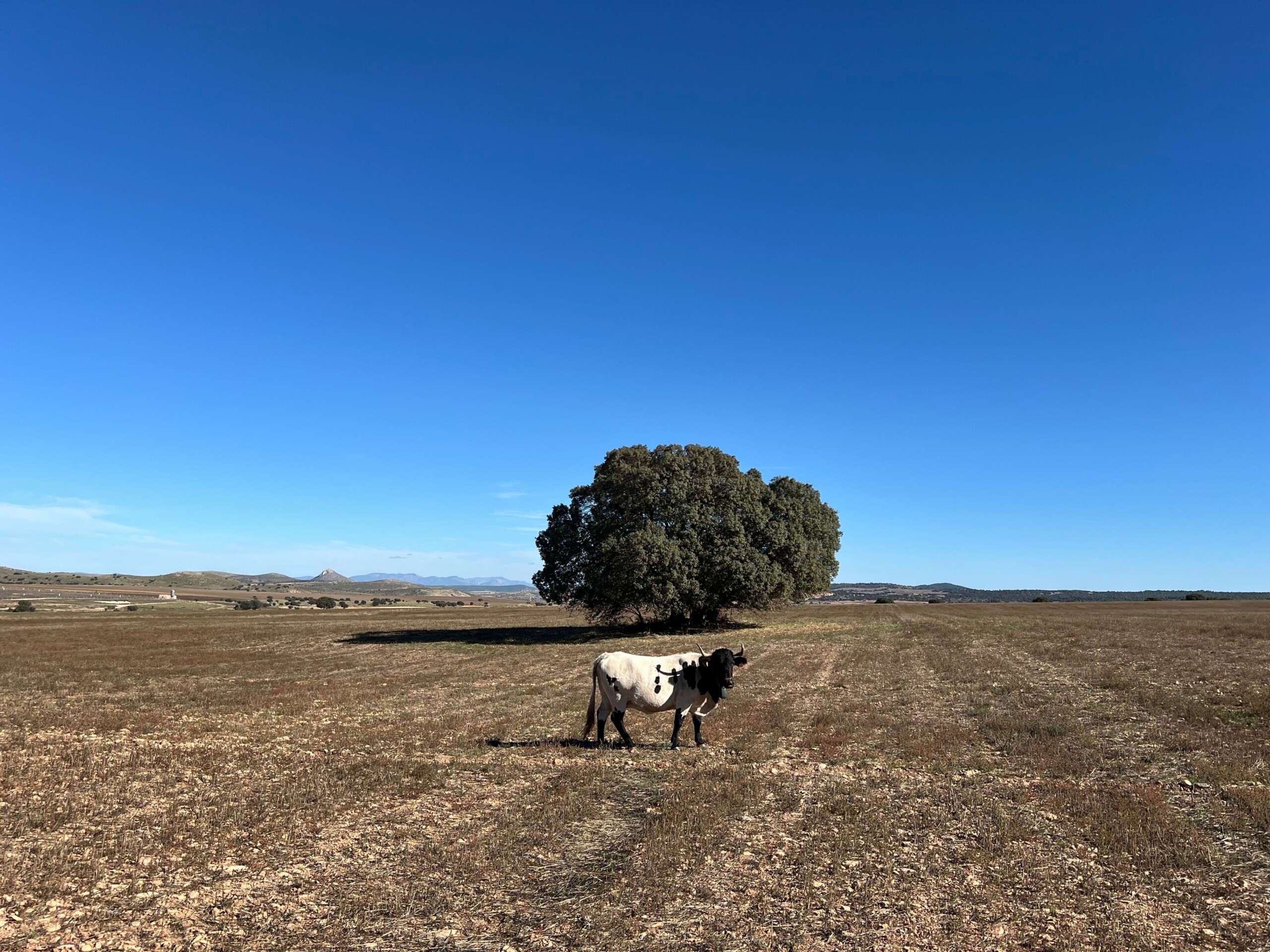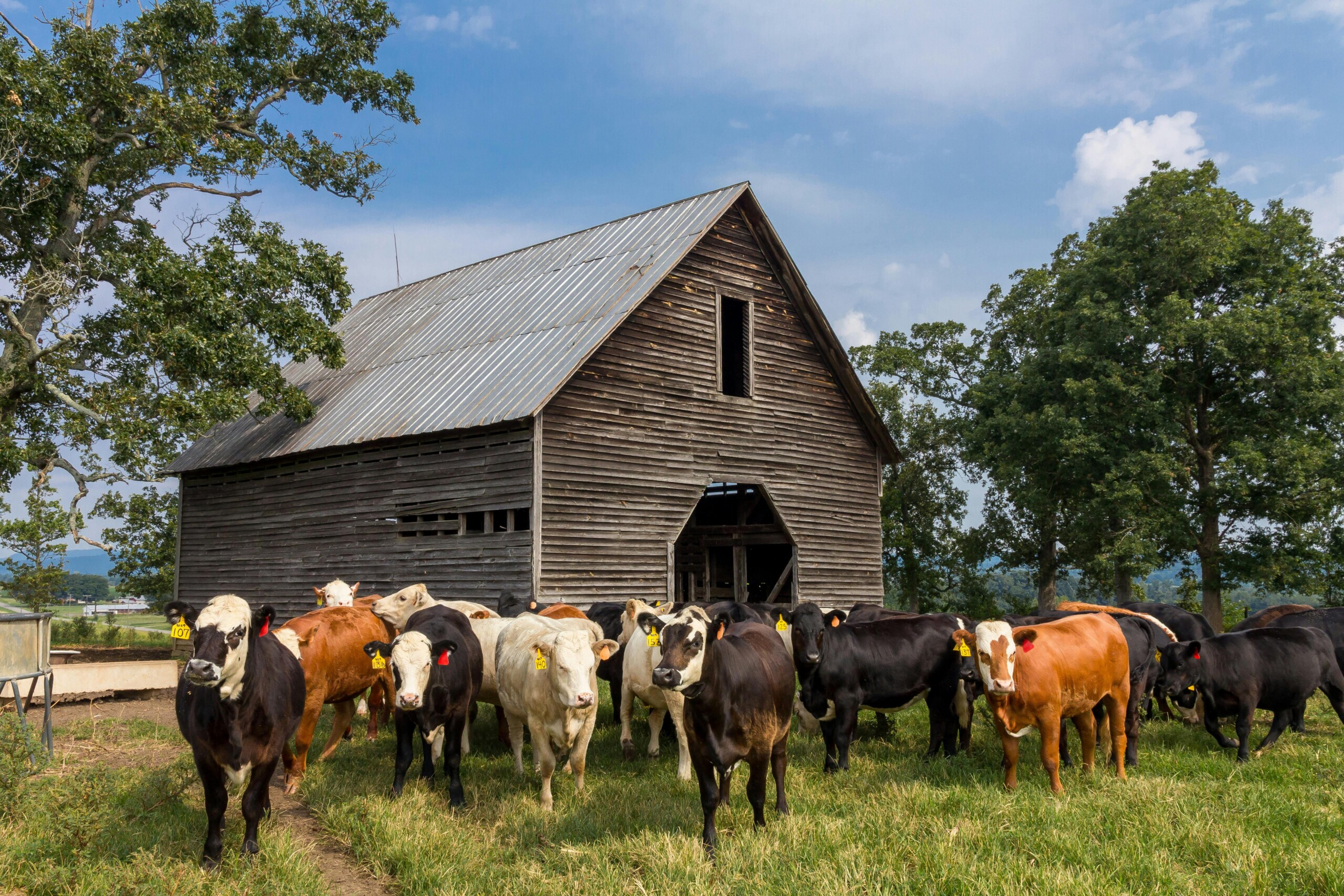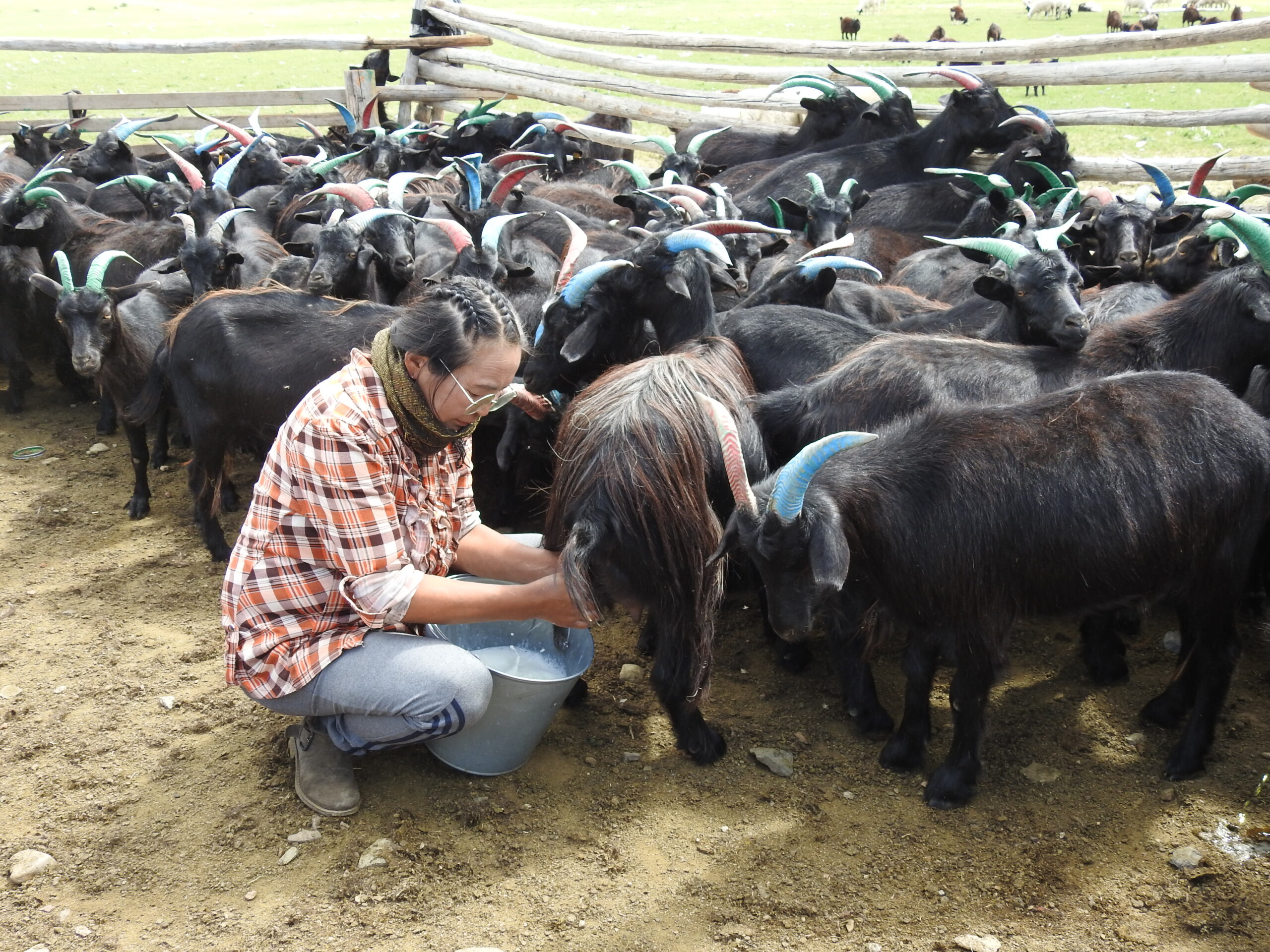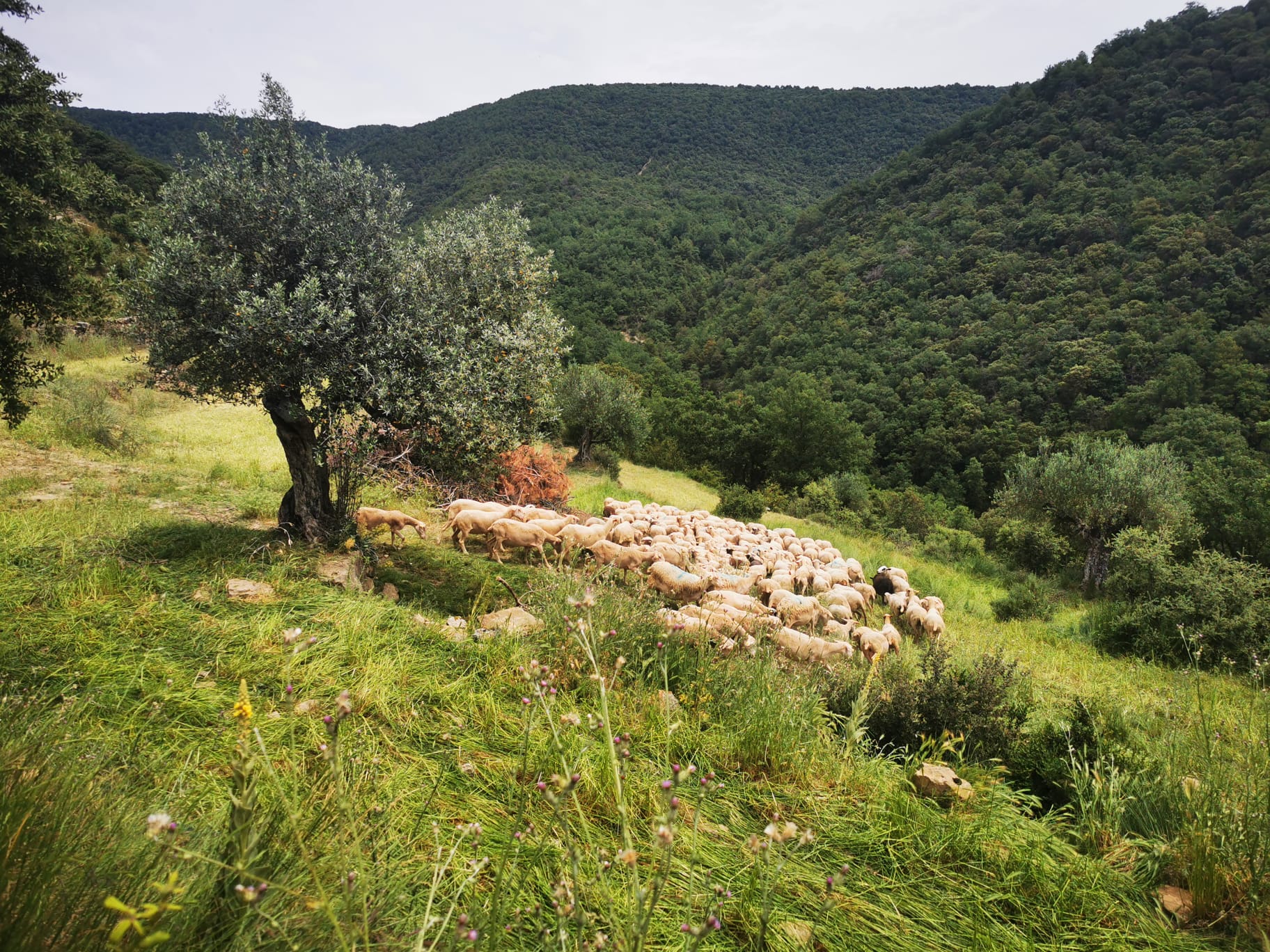
Photo by Lucía López Marco of a farm transitioning into regenerative agriculture to restore the ecosystem in San Vicente de Labuerda, Spain (June 2024).
The new landscape of uncertainty for farmers
By Lucía López Marco, COO Datamars Sustainability Foundation
16 October 2025, World Food Day
Across the world, farmers are facing a new kind of uncertainty. The weather no longer follows its old patterns—rain arrives late or too hard, droughts stretch for months, and floods can wash away a season’s work overnight. In this shifting landscape, the question of survival is not only about yields but about resilience: how to keep farming and producing when nature’s rhythm becomes unpredictable.
Regenerative agriculture offers a way forward. It is not a single technique, but a living process—an approach that works with the land rather than against it. By restoring soil health, increasing biodiversity, and reducing dependence on external inputs, it helps farmers buffer the shocks of climate extremes and continue to feed their communities.
From extraction to regeneration
For decades, the dominant agricultural model has prized efficiency and output above all else. The result has been soil depletion, loss of biodiversity on and off the farm, and increasing vulnerability to climate change. Regenerative systems turn that logic upside down. Healthy soils act like sponges, retaining water during drought, and releasing it during floods. Deep-rooted plants improve structure and fertility, while diverse rotations reduce pest pressure and the need for synthetic inputs. Location-appropriate farm animal breeds withstand the challenging conditions of their landscapes.
As the FAO explains, “climate-smart” and regenerative agriculture share a core goal: to sustain productivity while building resilience and reducing emissions. Farmers who adopt regenerative methods often report more stable yields—even in years of drought—along with lower costs and healthier soils.
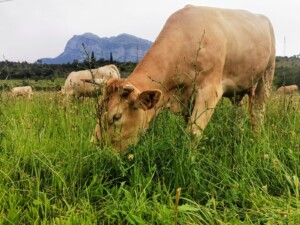
Photo by Lucía López Marco of a mountainous regenerative and organic farm raising indigenous Pirenaica cattle in Aínsa, Spain (June 2024).
Stories from the ground
In Spain’s Aragón region, regenerative grazier Sergio Alierta has transformed his family farm by selecting and managing cattle as allies in ecosystem restoration. Through holistic grazing and a deep focus on soil regeneration, he has turned once-degraded land into living, resilient pastures.
“We realized that the way we managed animals could either destroy or regenerate the land,” he explains in the short film, “Livestock farming as a tool for soil and pasture recovery (Sergio Alierta)” produced by GOB Menorca. “Now the soil holds water, the grass recovers faster, and the landscape is alive again.” Alierta’s work—highlighted by researchers and advocates across Spain—shows that resilience grows from observation, patience, and trust in ecological processes. (Learn more about Alierta in “Holistic Management – Sergio Alierta” by AgroEcoTube.)
Further north, in Ireland’s midlands, Datamars Sustainability Foundation (DMSF) is helping dairy and beef farmers explore how regenerative practices can make their farms more climate resilient and enhance the sustainability of beef production. Through the Multispecies Swards for Grazing project, DMSF and partners are studying how diverse plant mixes—grasses, legumes, and herbs—can improve forage quality, soil health, and drought tolerance. The project combines field trials with farmer-led learning, showing how multispecies swards can reduce fertilizer use and enhance resilience to both drought and heavy rain.
These stories echo what global evidence shows: that regenerative agriculture helps farms—and therefore our food supplies— not only survive but thrive in a changing climate. Reports by the World Bank and FAO document cases where practices such as cover cropping, crop–livestock integration, and agroforestry increase yields by 10–20% while improving resilience and cutting costs.
Animals as ecological allies
Among all regenerative practices, the thoughtful integration of animals may be one of the most powerful—and the most misunderstood. For decades, the narrative around livestock has centered on their environmental footprint, often overlooking the complexity behind those numbers and focusing almost exclusively on their emissions. Yet, as researchers Pablo Manzano and Agustín del Prado from the Basque Centre for Climate Change (BC3) explain in their video “When is Grazing Sustainable?”, this view misses the full picture.
Their work shows that the climate impact of livestock depends entirely on how animals are managed. Extensive and regenerative grazing systems can restore soils, recycle nutrients, and even offset part of their emissions through carbon sequestration in grasslands. By contrast, intensive feedlot systems disconnect animals from the land and amplify environmental costs.
Well-managed herds mimic natural grazing patterns, allowing pastures to rest and regrow. This process improves soil organic matter, enhances water infiltration, and supports biodiversity—from pollinators to birds. As the FAO also highlights, integrated crop–livestock systems can reduce erosion, increase fertility, and diversify farmers’ income sources.
Regenerative livestock farmers demonstrate that animals are not the enemy of sustainability but its engine—vital collaborators in the regeneration of landscapes.
Resilience as an investment in the future of food
Resilience is not just recovery—it’s anticipation. It means replacing short-term exploitation with long-term stewardship, seeing soil and animals alike as allies rather than resources to exhaust. The FAO Strategy on Climate Change 2022–2031 reminds us that investing in farmers’ adaptive capacity today prevents far greater losses tomorrow.
For many farmers, regeneration is a quiet form of resistance—against depletion, dependency, and despair. It is the art of continuity: finding ways to live and produce food in harmony with the land’s natural limits.
Resilient farms = resilient food systems
The path toward regeneration requires courage and collaboration. Policymakers, businesses, and consumers all play a role in ensuring that farmers are supported in adapting to a changing climate, so they can continue their important work of feeding the world.
On World Food Day (October 16), we are reminded that food security depends on those who continue to work the land even when the odds seem impossible. Supporting their resilience is not charity—it is foresight.


